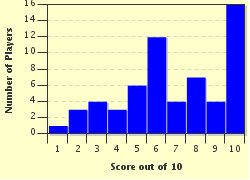Quiz Answer Key and Fun Facts
1. Who did the Chicago White Sox play in the 1919 World Series?
2. What was the outcome of the 1919 Series?
3. Who was the owner of the White Sox at that time?
4. Who was the manager of the 1919 White Sox?
5. Which of the eight conspirators was the losing pitcher in three of the games?
6. What was the signal from the players to the gamblers in the first game that the fix was on?
7. Who led all batters in the 1919 World Series with a .375 batting average, had a World Series record of 12 hits, and hit the only home run of the Series?
8. Which notorious gambler was named by several of the involved players as being the fixer and was called to testify before the Grand Jury looking into the scandal, but was never charged?
9. A Grand Jury was convened on October 22, 1920, and nine counts of conspiracy to defraud various individuals and institutions were filed, naming eight players and 5 gamblers. Confessions by Joe Jackson and Eddie Cicotte were filed but when the case went to trial, the confessions had disappeared. The subsequent trial started on June 27, 1921, and after 12 days of testimony, the jury returned with what verdict in only 3 hours?
10. Which pitcher, not one of the conspirators, was the winning pitcher in two of the games?
Source: Author
ncrmd
This quiz was reviewed by FunTrivia editor
gtho4 before going online.
Any errors found in FunTrivia content are routinely corrected through our feedback system.

